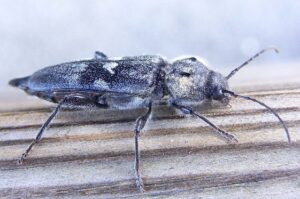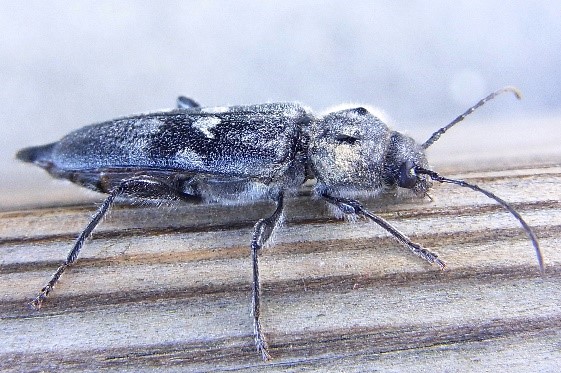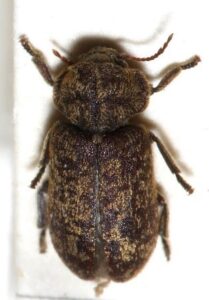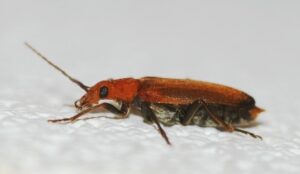Old House Borer
General Description

Credit: Siga |

Credit: CSIRO |
- Adults are 10-16 mm long, with an elongated, cylindrical body. Glossy black or dark brown with two patches of gray hairs on the flanks. Antennae of adults are long, reaching more than half the length of their body. On the pronotum two conspicuously hairless tubercles are characteristic of the species. On the elytra usually there are two whitish pubescent spots. Females do not have a real ovipositor, only a little more elongated telson.
- Larvae are yellowish-white in color, thoracic legless, and mature larvae can reach 30 mm.
Life Cycle and Common Characteristics
| · This pest prefers to infest softwood.
· Adults are most active in the summer (June–September). · The female lays her eggs in the cracks and openings of the wood. · Larvae pupate just beneath the wood surface (mid to late summer). |
Credit: svajcr |
- Larvae turn into pupae and then into adults that remain for several months inside the tunnels before they exit from an opening (6–10 mm in diameter) that is considered the only apparent evidence of wood being infested with this pest.
- The life cycle from egg to beetle takes two to ten years, depending on the type of wood, its age and quality, its moisture content, and also depending on environmental conditions such as temperature.
Damages and Economic Implications
- Old house borers attack freshly produced sapwood of softwood timber.
- Contrary to the name “old-house borer”, the species is more often found in new houses; maybe because the beetles are attracted to the higher resin content of wood harvested more recently than 10 years earlier.
- If old wood is attacked, the damage is usually greater.
- Old house borers can be quite important as a scavenger of dead pine trees, pine fence posts, and similar objects, hastening their decay and collapse.




